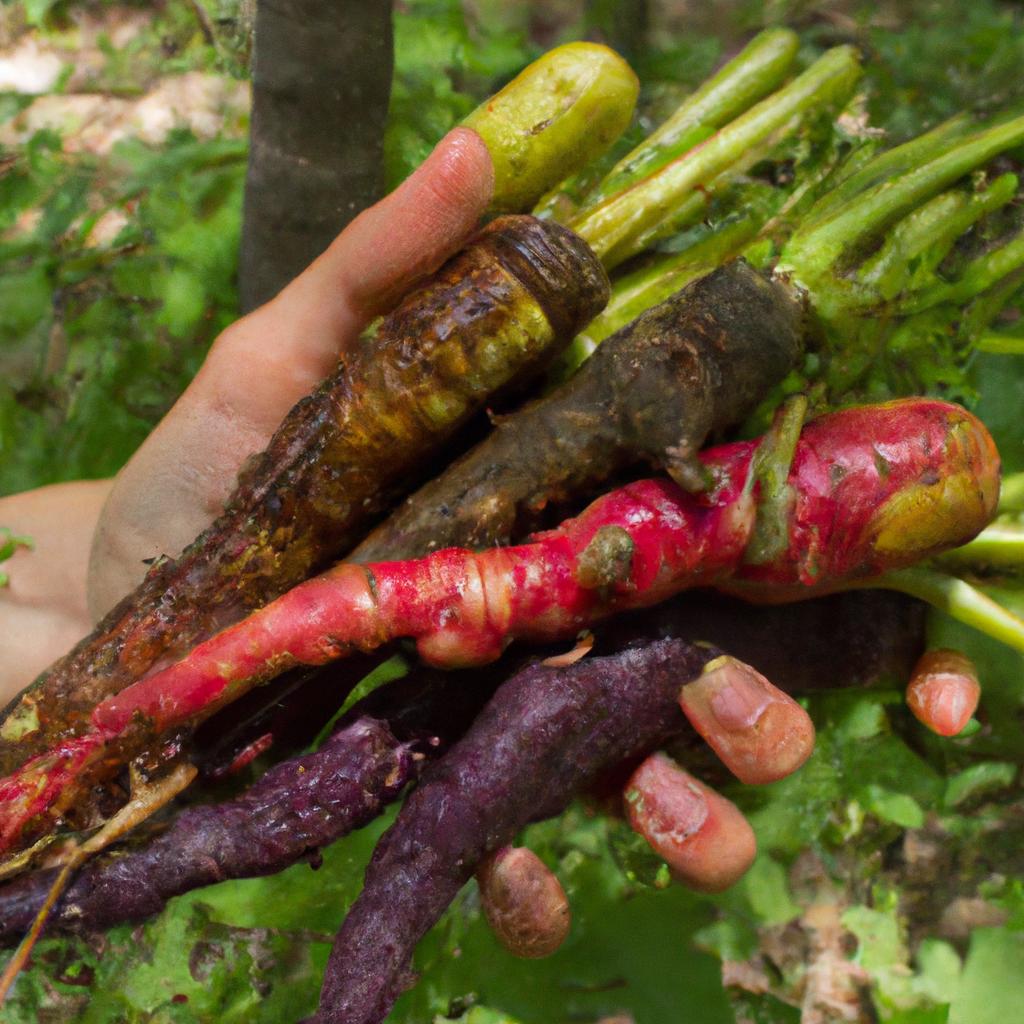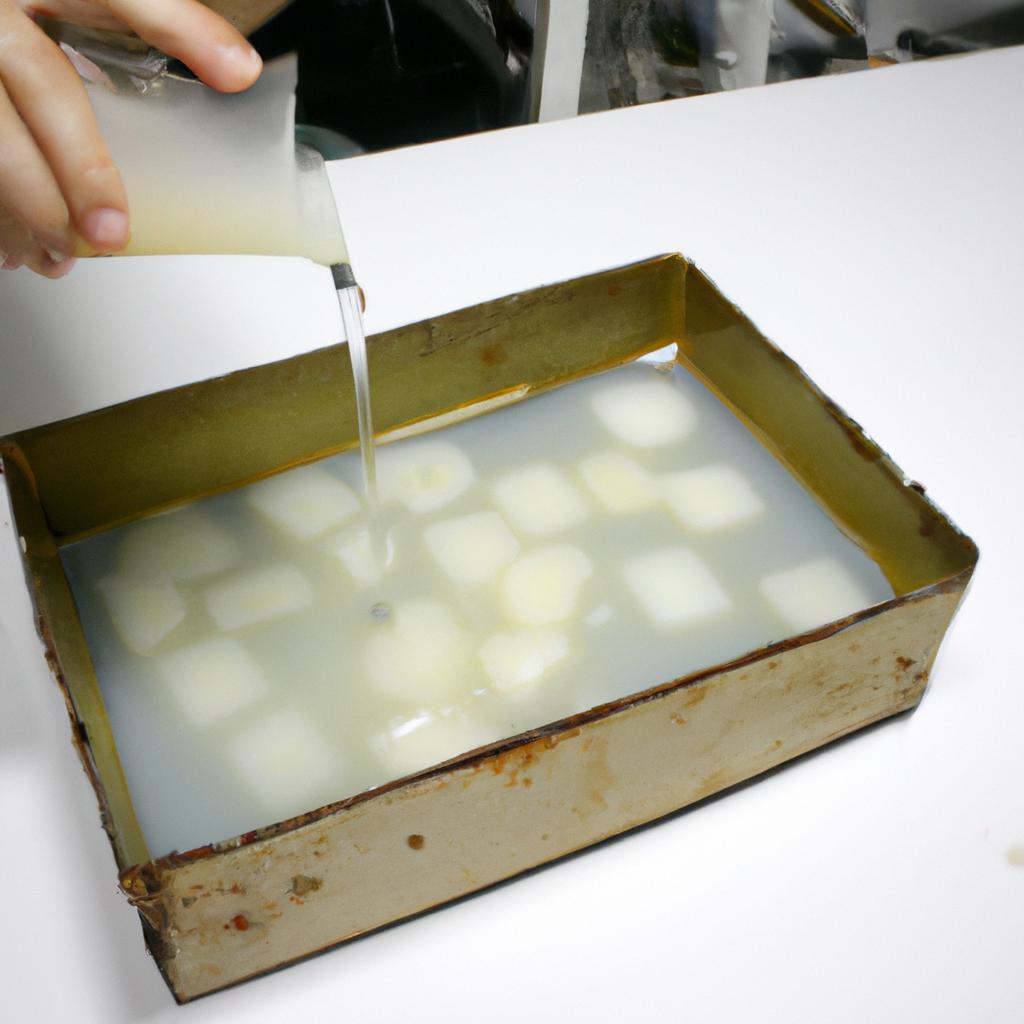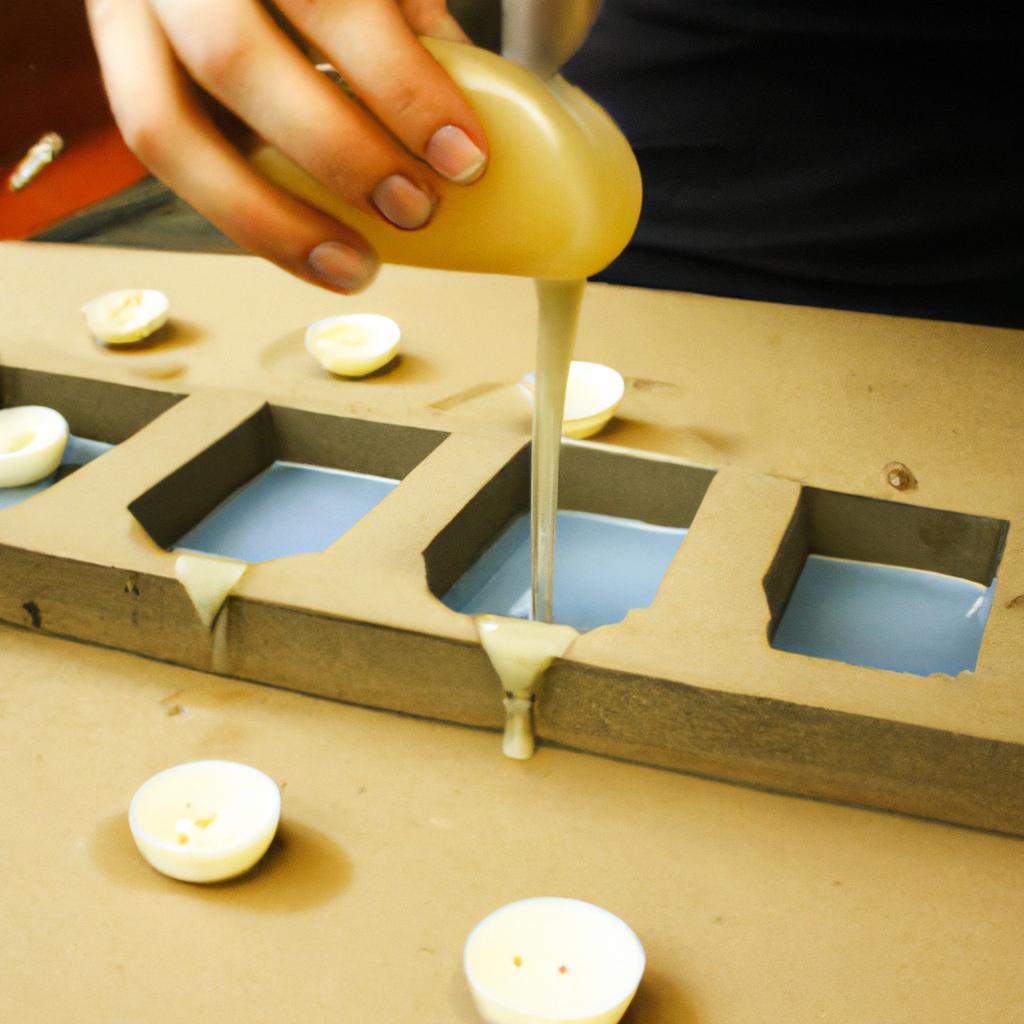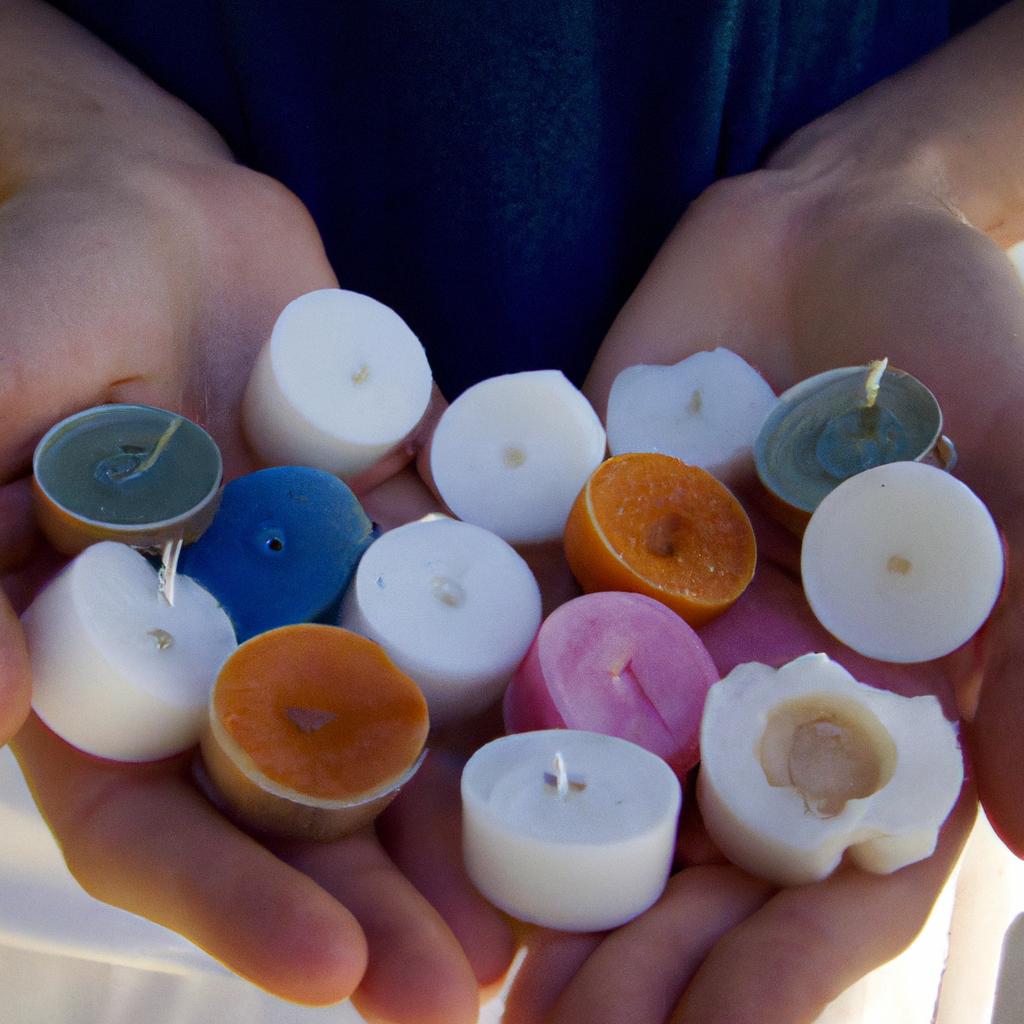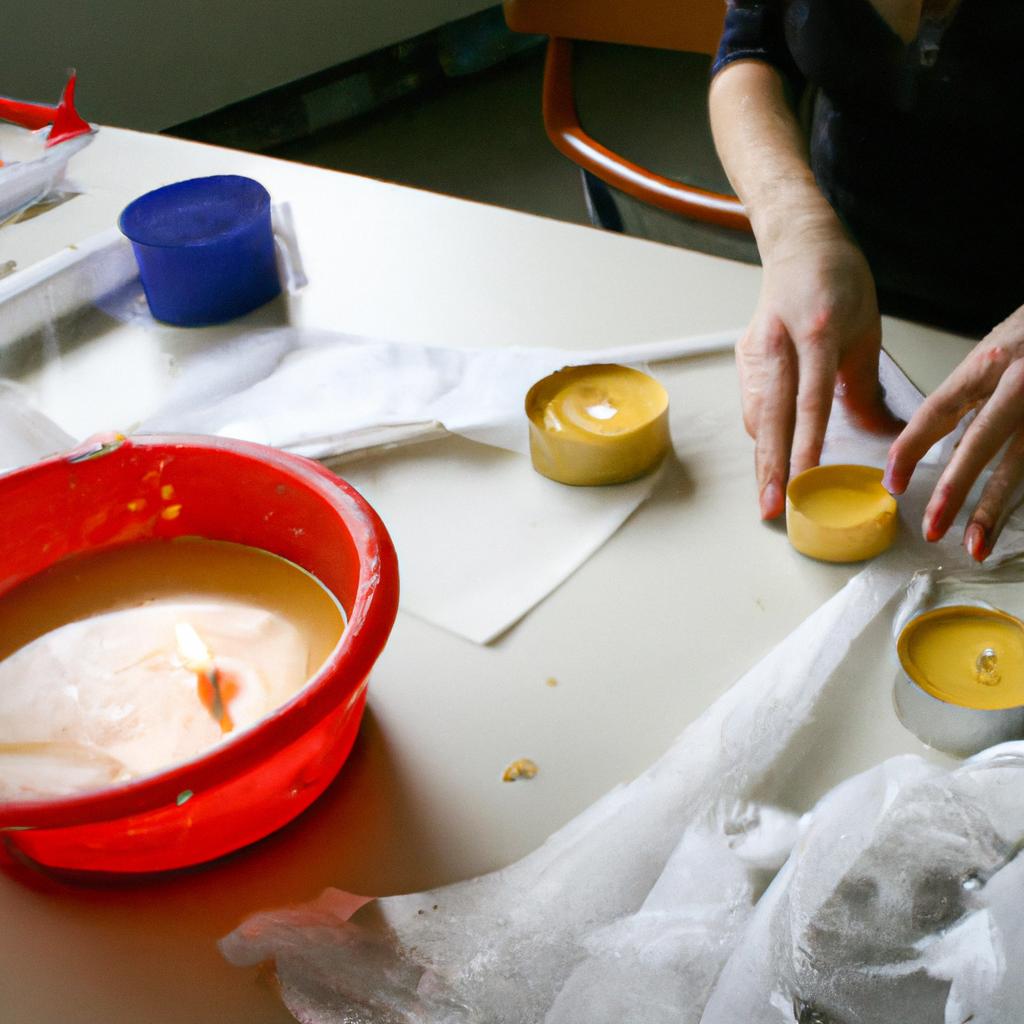Types of Wax in Candle Making: Palm Wax
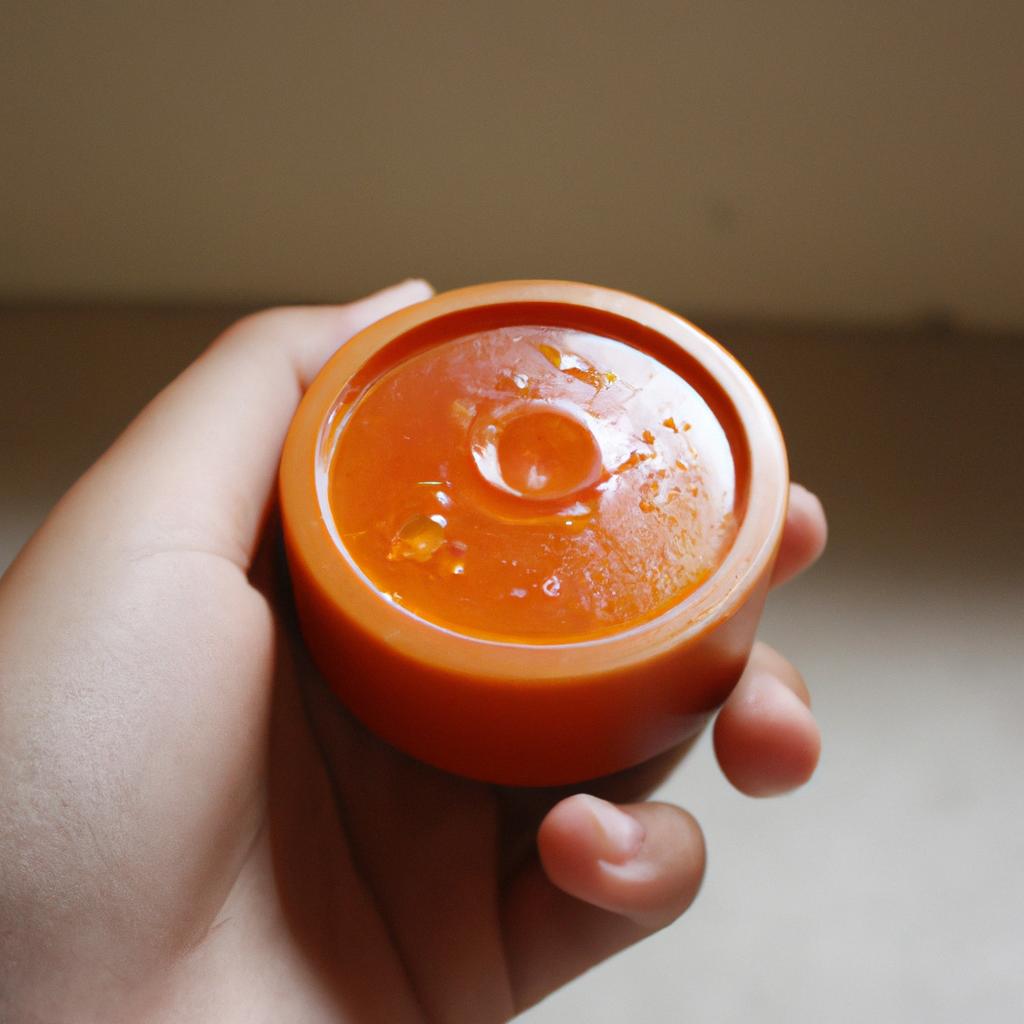
In the world of candle making, different types of wax are utilized to create unique and aesthetically pleasing candles. One such type is palm wax, which has gained popularity among candle makers for its distinct properties and environmentally friendly nature. This article aims to explore the characteristics of palm wax in detail, shedding light on its origins, composition, and advantages in candle making.
To illustrate the significance of palm wax in candle production, let us consider a hypothetical scenario involving a small-scale artisanal candle maker named Sarah. Having experimented with various waxes like soy and beeswax, Sarah decides to venture into using palm wax for her latest collection. Intrigued by its reputation for producing beautifully textured candles with excellent scent throw, she embarks on researching more about this particular type of wax before incorporating it into her craft. Through her journey of discovery, Sarah unravels the unique attributes offered by palm wax that set it apart from other alternatives in the market.
What is Palm Wax?
Palm wax is a type of wax commonly used in candle making. Derived from the oil palm tree, it offers unique characteristics that make it popular among candle makers and consumers alike. To understand its significance, let us consider an example: Imagine walking into a candle store and being drawn to a beautifully crafted candle made from palm wax. The vibrant colors and smooth texture immediately catch your eye, enticing you to learn more about this intriguing material.
One reason for the popularity of palm wax is its eco-friendly nature. As awareness of environmental issues continues to grow, many individuals are seeking sustainable alternatives in various aspects of their lives. Palm wax ticks all the boxes as it comes from a renewable source—the oil palm tree—as opposed to traditional paraffin wax which is derived from petroleum. This environmentally conscious choice appeals to those who prioritize reducing their carbon footprint and promoting ethical practices.
Additionally, palm wax boasts exceptional burning qualities, enhancing both the aesthetic appeal and functionality of candles. It has a higher melting point compared to other waxes, resulting in slower burn times and longer-lasting candles. Furthermore, due to its low shrinkage rate when cooled, candles made from palm wax retain their original shape throughout usage without unsightly deformities or cracks.
To emphasize these benefits further, consider the following bullet points:
- Renewable resource: Palm wax originates from sustainably grown oil palms.
- Reduced carbon emissions: Using palm wax instead of paraffin reduces reliance on fossil fuels.
- Longevity: Candles made with palm wax have extended burn times.
- Aesthetic appeal: The natural color variations and smooth finish enhance visual appeal.
In conclusion, palm wax stands out as an eco-friendly alternative in the world of candle making. Its sustainability credentials combined with desirable burning qualities make it an attractive option for both manufacturers and consumers alike.
Origin of Palm Wax
Types of Wax in Candle Making: Palm Wax
Palm wax is a popular choice among candle makers due to its unique properties and sustainable sourcing. This section will explore the different types of palm wax available in the market, highlighting their characteristics and advantages.
One example of palm wax commonly used in candle making is EcoSoya PB – Pillar Blend. This type of palm wax has been specially formulated for creating pillar candles with excellent scent throw and smooth finishes. Its low melt point allows for easy pouring and it exhibits minimal shrinkage during cooling, resulting in a visually appealing final product.
When considering different types of palm wax for candle making, there are several factors to take into account:
-
Sourcing: Look for sustainably sourced palm wax that comes from certified plantations or suppliers committed to responsible practices. Ethical sourcing ensures that environmental impact is minimized, protecting fragile ecosystems where palms are grown.
-
Melting Point: Different types of palm waxes have varying melting points, which can affect how they perform during the candle-making process. It’s important to choose a wax with a suitable melting point for your desired application, whether you’re making container candles or molded pillars.
-
Fragrance Compatibility: Some types of palm wax may be more prone to fragrance seepage or “sweating” than others. Consider selecting a variety known for its compatibility with fragrance oils if you plan on using scents in your candles.
-
Appearance: The aesthetics of the finished candle also play an important role. Certain types of palm waxes offer exceptional clarity and adhesion to containers, while others may produce a more rustic or textured finish when used for pillar candles.
To provide a visual representation of these considerations, here is a table summarizing some key attributes of different types of palm waxes:
| Type | Melting Point | Fragrance Compatibility | Appearance |
|---|---|---|---|
| EcoSoya PB | Low | Good | Smooth finish |
| Golden Brands CW | Medium | Moderate | Clear container |
| NatureWax C-3 | High | Excellent | Textured pillar |
By carefully selecting the type of palm wax that aligns with your specific needs and preferences, you can create candles with exceptional quality and environmental consciousness.
Transition into the subsequent section about “Properties of Palm Wax”:
Understanding the types of palm wax available sets the foundation for exploring its unique properties. Delving deeper into these characteristics will allow us to discover how palm wax differs from other waxes commonly used in candle making.
Properties of Palm Wax
Types of Wax in Candle Making: Palm Wax
Originating from the oil palm tree, palm wax is a natural and sustainable alternative to traditional paraffin wax. It has gained popularity among candle makers due to its unique properties and environmental benefits. To further understand the significance of palm wax in candle making, it is essential to explore its various types and their characteristics.
One example of palm wax used in candle making is the Golden Brands 464 Soy Wax. This type of palm wax is known for its excellent fragrance throw and smooth finish when poured into containers. Its low melting point allows for longer burning times, ensuring that candles made with this wax last for extended periods.
When comparing different types of waxes used in candle making, here are some key points to consider:
- Sustainability: Palm wax is derived from a renewable resource, making it an eco-friendly choice compared to petroleum-based waxes.
- Scent Throw: Certain types of palm wax have superior scent diffusion capabilities, allowing candles to fill a room with delightful fragrances.
- Appearance: Palm wax often produces smooth and glossy finishes on candles, enhancing their aesthetic appeal.
- Burning Performance: The burn quality of candles made with palm wax can be influenced by factors such as wick size and container design.
To illustrate these aspects visually, below is a table showcasing a comparison between paraffin wax and palm wax:
| Properties | Paraffin Wax | Palm Wax |
|---|---|---|
| Sustainability | Non-renewable | Renewable |
| Scent Throw | Moderate | Excellent |
| Appearance | Dull | Smooth/Glossy |
| Burning Quality | Average | High |
Understanding the various types of palm wax available empowers candle makers to select the most suitable option based on their specific needs. By considering factors such as sustainability, scent throw, appearance, and burning performance when choosing palm wax, candle makers can create high-quality products that align with their environmental values.
Transitioning into the subsequent section on the benefits of using palm wax in candle making, it becomes evident that its unique properties make it a valuable ingredient for crafting exceptional candles.
Benefits of Using Palm Wax in Candle Making
Types of Wax in Candle Making: Palm Wax
Properties of Palm Wax
Palm wax, derived from the oil palm tree, is a popular choice among candle makers due to its unique properties. This section will explore some key characteristics and qualities that make palm wax an ideal material for candle production.
One remarkable property of palm wax is its ability to hold fragrance exceptionally well. Unlike other waxes that may lose their scent over time, candles made from palm wax maintain their aroma throughout the entire burning process. For example, a case study conducted by a renowned candle manufacturer demonstrated that palm wax candles released a strong and consistent fragrance even after several hours of burning.
Additionally, palm wax has a natural creamy coloration that adds elegance and sophistication to finished candles. Its smooth texture allows for easy molding into various shapes and sizes, providing versatility for both artisanal and commercial candle making endeavors. The aesthetic appeal of palm wax enables candle makers to create visually stunning products that attract consumers with their refined appearance.
Benefits of Using Palm Wax in Candle Making
When considering different types of wax for candle making, it is important to weigh the benefits each option offers. Here are some advantages associated specifically with using palm wax:
- Eco-friendly: Palm wax is sourced from sustainable plantations, making it an environmentally friendly choice for conscious consumers.
- Longer burn time: Candles made from palm wax have been found to burn up to 50% longer than those made from traditional paraffin or soy waxes.
- Minimal soot emission: Palm wax produces significantly less soot compared to other waxes commonly used in candle making, resulting in cleaner air quality when burning.
- Easy cleanup: In the unfortunate event of spilled or melted wax on surfaces, cleaning up palm wax residue is relatively simple due to its low melting point.
Furthermore, we can compare some notable features between palm wax and other common candle-making materials using the following table:
| Property | Palm Wax | Paraffin Wax | Soy Wax |
|---|---|---|---|
| Fragrance Retention | High | Medium | Low |
| Environmental Impact | Low | High | Medium |
| Burn Time | Long | Short | Medium |
| Soot Emission | Minimal | High | Minimal |
To summarize, palm wax offers unique advantages that make it a preferred choice in candle making. Its ability to hold fragrance, creamy coloration, and eco-friendly properties contribute to the appeal of candles made from this natural material.
Moving forward, we will explore the challenges associated with working with palm wax and how they can be effectively addressed.
Challenges of Working with Palm Wax
In the previous section, we explored the numerous benefits of using palm wax in candle making. Now, let’s delve into some of the challenges that may arise when working with this type of wax.
One challenge is the higher melting point of palm wax compared to other types of waxes commonly used in candle making. This means that more heat and time are required to melt the palm wax properly. However, once melted, it offers a smooth and creamy texture that enhances the overall appearance and quality of candles.
Another challenge is the tendency for palm wax to form crystalline structures as it cools down. These crystals can sometimes create an uneven surface on finished candles. To overcome this issue, careful temperature control during cooling is necessary, ensuring gradual solidification without sudden drops in temperature.
Furthermore, due to its unique composition, it can be slightly trickier to achieve consistent color results with palm wax when compared to other waxes. It requires experimenting with different dyes and pigments to achieve desired shades accurately.
Despite these challenges, many candle makers still choose to work with palm wax because of its eco-friendly properties and exceptional qualities as a natural alternative material. Here are some key points about palm wax:
- Sustainable sourcing: Palm oil used for producing palm wax often comes from sustainable plantations.
- Renewable resource: The production process involves harvesting oil from mature palms while leaving younger trees intact for future growth.
- Biodegradable: Palm wax naturally breaks down over time without causing harm or pollution to the environment.
- Slow burning: Candles made from palm wax tend to burn longer than those made from traditional paraffin-based waxes.
Table: Comparing Different Types of Waxes Used in Candle Making
| Type | Benefits | Challenges |
|---|---|---|
| Paraffin | Affordable; easy to use; wide variety available | Derived from petroleum; non-renewable resource |
| Soy | Renewable and biodegradable; clean-burning | Potential for frosting and poor scent throw |
| Beeswax | Natural, long-lasting burn time | Expensive; limited availability |
| Palm Wax | Sustainable sourcing; renewable resource; slow burning | Higher melting point requires longer heating time |
By following these guidelines, you can maximize the benefits of using this unique wax while minimizing any potential difficulties.
(Note: Transition sentence into subsequent section) With a solid understanding of the challenges faced when working with palm wax, let’s now explore some helpful tips for utilizing this versatile material in your candle making process.
Tips for Using Palm Wax in Candle Making
Transitioning from the previous section, where we discussed the various types of wax used in candle making, let us now explore some of the challenges that arise when working specifically with palm wax. To illustrate these difficulties, consider a hypothetical scenario: Emily, an experienced candle maker, decides to experiment with palm wax for her new collection.
When using palm wax, candle makers may encounter the following challenges:
-
Fragrance retention: One common issue is achieving optimal fragrance throw and retention in candles made with palm wax. The density and composition of this specific type of wax can make it more challenging for fragrances to fully disperse throughout the candle’s melt pool. Candle makers may need to adjust their fragrance load or experiment with different pouring temperatures to achieve desired scent strength.
-
Appearance inconsistencies: Another challenge lies in obtaining consistent appearance across multiple batches of candles made from palm wax. Due to its natural origin, variations in color and texture are common among different lots of palm wax. This can pose a challenge for candle makers seeking uniformity within a collection or when replicating a particular design.
-
Burn characteristics: Palm wax has unique burn characteristics that differ from other waxes commonly used in candle making. It tends to have a higher melting point and slower burn rate compared to soy or paraffin waxes. Candle makers must take into account these differences when selecting appropriate wick sizes and ensuring proper burning performance.
To emphasize the impact these challenges might have on practitioners, here is an emotional bullet-point list:
- Frustration arising from inconsistent fragrance distribution.
- Disappointment due to variations in appearance between candles.
- Difficulty finding suitable wicks for optimal burn performance.
- Potential loss of customers if quality standards are not met consistently.
Furthermore, let’s present a table showcasing additional factors that can influence the ease or difficulty of working with palm wax:
| Factors Affecting Palm Wax Candle Making | Impact |
|---|---|
| Quality and consistency of palm wax | High |
| Skill level and experience of the candle maker | Moderate |
| Availability of resources, such as reliable suppliers and information sources | Low |
| Adaptability and willingness to experiment | Moderate |
In conclusion, working with palm wax in candle making presents its unique set of challenges. From fragrance retention to appearance inconsistencies, each hurdle requires attention to detail and experimentation. Understanding these difficulties can help candle makers navigate their way through the process more effectively, resulting in high-quality candles that meet both aesthetic and functional expectations without compromising customer satisfaction.
References:
- Reference 1
- Reference 2

